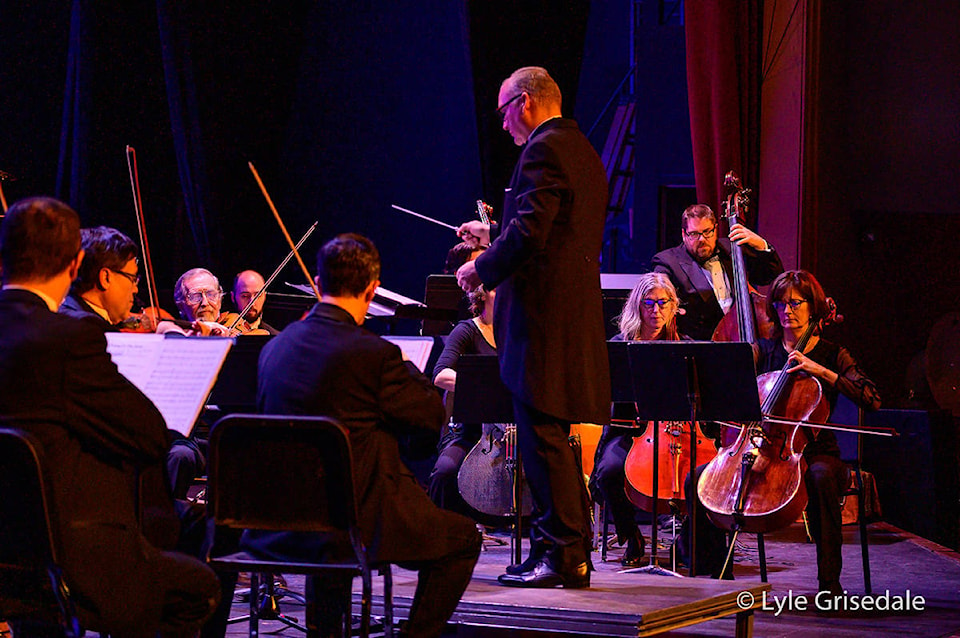Pictured above: Evan Bueckert served as guest conductor of the Symphony of the Kootenays, Saturday, Feb. 2. Lyle Grisedale photo
By Yme Woensdregt
About 100 years ago, two musical worlds came together. In the US, a new type of music was being born, arising out of various strains of homegrown ideas. The old songs from the days of slavery joined with music arising from immigrant groups and other forms of new dance crazes, eventually giving birth to early jazz.
At the same time, transatlantic travel became much easier to manage. The result was that European composers came to the US and heard this new music and began to incorporate it into their music. American composers also travelled to Europe to study the techniques of European masters.
Classical music was changed. The infectious rhythms, syncopated beats, and new chords of jazz music were incorporated into classical music. Sometimes the results were happy; other times, the results were more experimental as composers tried to work with the new musical language.
On Saturday night, the Symphony of the Kootenays performed a concert entitled “Classical Jazz” under guest conductor, Evan Bueckert. The concert explored how this new type of music coming from the USA affected classical music. As Bueckert said, “Jazz crashed classical music’s dinner party.”
The concert was, therefore, a mixture of classical music which tried to incorporate jazz idioms into its own texture as well as pieces straight from the repertoire arranged for orchestra.
The opening few pieces were the first type. “La Création du Monde” by French composer Darius Milhaud is a ballet which explores the story of the creation of the world based on African mythology. Milhaud uses jazz harmonies, as well as instrumentation in his score. It was a bold opening for the concert, but not particularly effective. Things improved a bit with Debussy’s “Cakewalk” (from “Children’s Corner”), the Cakewalk being a syncopated dance form.
The first half ended with a more successful rendition of W.C. Handy’s “St. Louis Blues” and Gershwin’s “An American in Paris”, complete with blaring taxi horns and dancehall music spilling out into the streets.
In the second half, the orchestra seemed much more comfortable. It opened with a wonderful fantasy based on the spiritual, “When the Saints go Marchin’ In”. The familiar song went through a number of very interesting changes in this piece, and the wind section were clearly in their element. The second half included Gershwin’s “Fascinatin’ Rhythm”, Cole Porter’s “Night and Day”, Irving Berlin’s “Alexander’s Ragtime Band”, tango king Astor Piazzolla’s “Oblivion”, Leroy Anderson’s “Jazz Pizzicato”, and ended with a wonderful arrangement of Chuck Mangione’s “Children of Sanchez”.
It was a delightful night of music, neither classical nor jazz, but certainly fun and energetic. Bueckert clearly enjoyed leading the orchestra, and the wind sections in particular (woodwinds and brass) were clearly in their element in this music. Finally, the percussion section was front and center, as you’d expect with music touched by the jazz tradition.
The Symphony returns for “Symphonic Spring” on April 6 to celebrate the arrival of new life and the warmth of the season.
